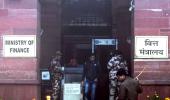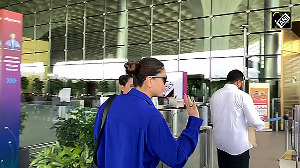With US President Donald Trump “temporarily suspending” country-specific reciprocal tariffs until July 9, India sees the three-month window as an opportunity to renew its push for a proposed bilateral trade agreement (BTA) with the US and expedite finalisation of the first tranche of the trade deal.

“The 90-day pause on the 26 per cent reciprocal tariff (imposed by the US on Indian imports) gives us the window to expedite the trade deal discussions that began last month.
"We still don’t know if the pause on reciprocal tariffs will continue beyond 90 days,” a senior government official told Business Standard.
Finalising at least the first tranche of the deal may offer some relief to Indian exporters, even if Washington decides to continue with the 26 per cent reciprocal tariffs after the three-month pause, the official added.
In February, Prime Minister Narendra Modi and US President Trump announced their intention to finalise the first phase of a mutually beneficial BTA by the fall of 2025.
After the US last week announced country-specific reciprocal tariffs ranging from 10 per cent to 50 per cent on imports from several countries, with India facing a 26 per cent duty, Trump on Wednesday reversed his decision and announced a 90-day pause on all reciprocal tariffs — except those on China — effective from midnight on April 9 (Eastern Time).
Currently, a 10 per cent ad valorem tariff, over and above the existing most-favoured nation (MFN) tariff, continues on American imports.
America’s plan to impose reciprocal tariffs on most countries has prompted several major trade partners to reach out to India for free-trade agreements (FTAs).
Apart from the US, India is negotiating trade deals with the United Kingdom, the European Union, New Zealand, Peru, Chile, and Oman.
Talks for trade agreements with Bahrain, Qatar, and the Gulf Cooperation Council (GCC) may also materialise.
The official cited above said India was planning to use this period to fast-track long-pending trade agreements with key partners, such as the UK and the EU.
In February, Prime Minister Modi and European Commission President Ursula von der Leyen had set an ambitious target to sign an FTA by the end of 2025.
At present, the approach is to finalise the deal in tranches, although a formal announcement regarding the same is pending.
India believes these trade deals will bring long-term benefits and boost exports to these regions, the official said.
“India’s negotiating position is stronger now.
"Considering the fast-changing geopolitical environment and the EU’s tension with the US, the trade bloc is more willing to address India’s concerns on non-tariff barriers, such as carbon border adjustment mechanism (CBAM) and deforestation regulation,” the official said.
Before the tariff pause was announced, Commerce Minister Piyush Goyal said on Wednesday that India was working with the US administration to remove the 26 per cent tariff imposed on Indian goods.
"We believe that India was not one of those countries which really needed to have tariffs on them because we were already in engagement for a bilateral trade deal but the US has not differentiated.
"For every country, they have come out with a number. But we are in constant engagement.
"We will be working with them to take off these additional tariffs in the days to come.”












 © 2025
© 2025